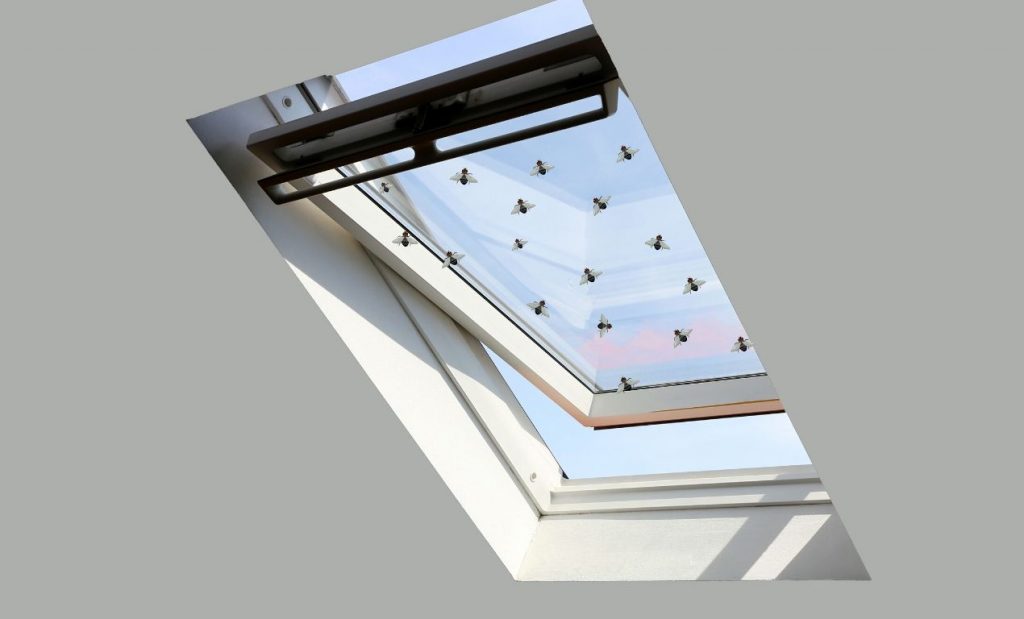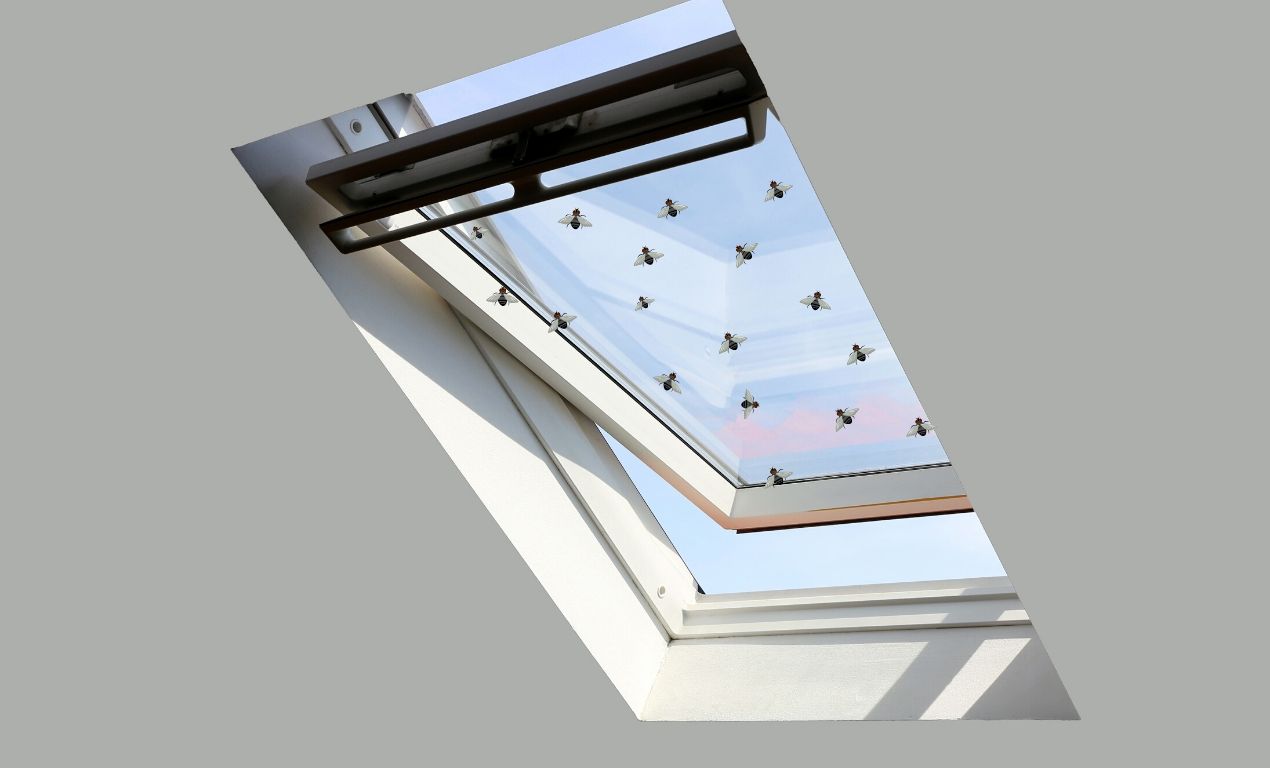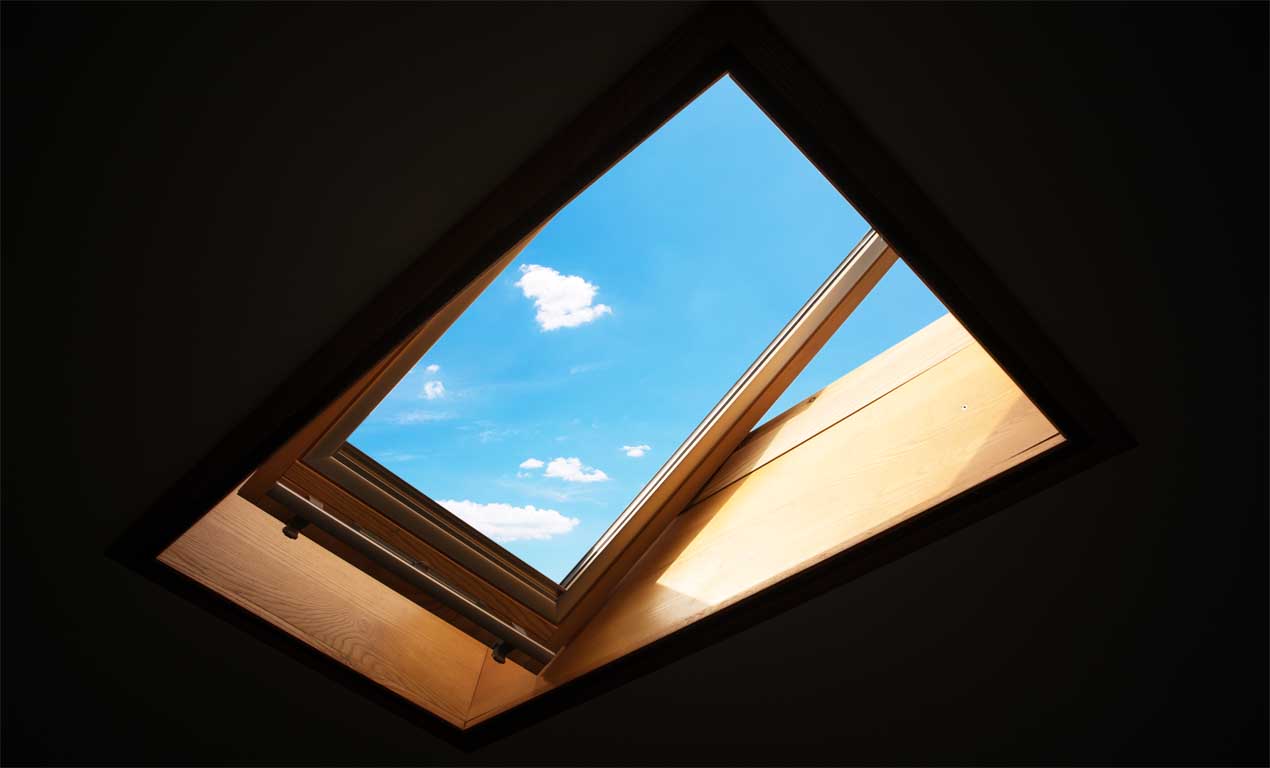
 There are innumerable fly species in the world today. The ones which come through your skylight and attic are the cluster flies or the attic flies. They are known as Pollenia Rudis. They belong to the Calliphoridae family, of which blow and bottle fly also belongs. These cluster flies are similar to the common flies but are larger and darker.
There are innumerable fly species in the world today. The ones which come through your skylight and attic are the cluster flies or the attic flies. They are known as Pollenia Rudis. They belong to the Calliphoridae family, of which blow and bottle fly also belongs. These cluster flies are similar to the common flies but are larger and darker.
They invade your home from late fall to early spring, when the outside temperature dips and the environment is hostile. Your home gets considered as a cozy abode during these harsh winter months. During these cold months, they search for locations to hibernate. They strictly feed on earthworms, do not breed inside the human settlement, and are not harmful to us!
So, flies in the skylight what to do? The first and foremost thing is to reduce the infestation and here is what you can use to get rid of flies in the skylight.
- Cluster fly control kit
- Pest expert formula C spray
- Pest expert formula P+ spray
- Pest expert formula P powder
- Rentokil flies killer cassette
- Professional help
Appearance
 The cluster flies resemble the common houseflies. They are around 8 to 10mm long and dark grey. Their abdomen has a light and dark chequered patterns, compared to houseflies, who have dark stripes. They also do not have dark lines on their thorax like the houseflies or greenish-blue metallic body color as the bottle flies. When they are at rest, the wings of cluster flies overlap each other across their abdomen. They emit a sweetish odor when they get disturbed, and they are slow and sluggish. They have short yellow or golden colored hairs on their thorax.
The cluster flies resemble the common houseflies. They are around 8 to 10mm long and dark grey. Their abdomen has a light and dark chequered patterns, compared to houseflies, who have dark stripes. They also do not have dark lines on their thorax like the houseflies or greenish-blue metallic body color as the bottle flies. When they are at rest, the wings of cluster flies overlap each other across their abdomen. They emit a sweetish odor when they get disturbed, and they are slow and sluggish. They have short yellow or golden colored hairs on their thorax.
Habitat
During the fall, these cluster flies come in search of a secure place to hibernate during the winter. Since the days get shorter, they look for the west and south-facing houses with windows and attics, so that they get the sunlight for a longer duration at these locations. They get in thro’ cracks and crevices, gaps along the window sill, gaps in the skylight, and open attic windows. They all congregate at a secluded spot in your attic to hibernate thro’ the winter. Once the outside temperature crosses 12-degree Celcius, they would all fly out.
Food
Cluster flies do not attack human beings, nor bite them since their mouthparts do not have such an apparatus. They do not live on filth to carry any harmful bacteria. After their eggs hatch, the larvae feed on earthworms, just like the adult cluster flies. Hence, they only reduce your earthworm population from your garden.
Reproduction
The cluster flies come out of their hibernation in summer, and the females lay their eggs in the soil cracks. After a few days, eggs hatch into larvae, which seeks an earthworm and latches on to her body. They keep feeding on this host for the next two weeks. These larvae then molt and enter the pupa stage for 10-12 days before the adult cluster fly emerges. The cycle from egg to adult takes between 30 to 50 days, depending upon the climatic conditions. Cluster flies live for a long time compared to all other fly species. They can live for two years or more!
Prevention
This is the most crucial aspect of keeping at bay cluster flies to get into your homes. Follow these steps, especially around the beginning of fall:
Cracks: Check your entire house for any cracks and crevices, through which these flies can slip in. Look for cracks on your walls, the door, window joints, rooftops, especially your attic and also the areas around your chimney. Seal all crevices that you may find.
Repair: Repair all damaged doors and windows to ensure that they open and close properly. Replace broken panes on all your doors and windows. Check your skylight latches and the sealant around the glasses for any damage, which needs to get addressed.
Fumigate: Fumigate your rooms, especially those on the top. Use off-the-shelf insecticides like LamdaStar UltraCap 9.7 or Cyper WSP around the window and skylight frames from outside. The residue from this spray repels the cluster flies to enter from these sources.
Net: Seal of all windows, vents, and skylight with good quality insect nets, so that it keeps the flies away and alongside ventilation does not get compromised.
Skylight
 Skylight, also known as roof-light, which gets used in houses to allow daylight filter through. There are different types of skylights, depending upon its purpose:
Skylight, also known as roof-light, which gets used in houses to allow daylight filter through. There are different types of skylights, depending upon its purpose:
Open skylight: This is just an opening for ventilation into your homes. There are no impediments in its path.
Fixed unit: Here, there is a proper frame, which is covered by glass or plastic. The purpose of such a skylight is to allow natural light to stream into your home.
Operable skylight: These are hinged windows, fixed on your roof. You either manually or electronically open and close this skylight during the day. Here you the window frame, which has a hinged glass or plastic structure attached to it.
The glass or plastic that gets used in these skylights could have a coating to prevent UV lights from getting into your home. You could have fused glass panes with more than one surface to insulate your home from extreme temperature variance. There are various brands, types, and styles of skylights these days, and the glasses and plastics, have their ratings concerning their optimum performance.
Flies In The Skylight
 If you already have cluster fly infestation in your attic, look at the following methods to get rid of them:
If you already have cluster fly infestation in your attic, look at the following methods to get rid of them:
Indoor fogger: Many sprays are available in the market today. Spectracide Bug Stop fogger is one of them. Spray the entire loft, attic, around the skylight and fireplace areas. Leave your house for a few hours.
These sprays get into your tiny crevices, around the window sill and inside cracks in your skylight, if any. When you return, clean the dead flies from all your rooms and dispose of them into your garbage bin outside.
You can repeat this process for another week or two during the fall, to ensure all remnant flies gets exterminated.
Some more proven products are:
Cluster fly control kit: This fogger has a formula ‘P,’ which has a residual effect from future infestation for the next twelve weeks. A similar product is also available as aerosol sprays and gives you the same result.
Pest expert formula C spray: This spray gets used around the window and skylight frames and any nooks and corners where there is an infestation from these flies. The insecticide has a residual effect for the next three months.
Pest expert formula P+ spray: This can get used for larger areas, especially around your rooftop, chimney, and more extensive infestation from these attic flies. Very useful and is available in a spray format.
Pest expert XL formula P+ power fogger: This fogger needs to get lit, and large infestation of cluster flies get destroyed, due to 100% natural pyrethrin content.
Pest expert formula P powder: This gets used after the removal of all flies. Apply this powder around window frames, roof timbers, and niches, where these flies generally flock together.
Rentokil flies killer cassette: This gets used as fly repellant over some time. It leaves a pleasant aroma inside the house.
Professional help: Incase your infestation from cluster flies is very high and all the above gets failed, you must at once seek professional advice. They approach the problem very differently. They first check your premises for all the breaches. Then they eradicate the problem and seal these entry points. They would also provide you with suggestions for keeping these pests at bay.
Sound out: You have more humane solutions to keep out cluster flies from your home. Install Pest reject ultra-sound gadgets, that repel flying insects, including these cluster fly swarms. The power consumption is low, there is no odor or chemicals, and the flies get kept away. Depending upon the area of coverage, you may require more than one such gizmos at your home.
Traps: You also have the sticky tapes and fly traps that get used in your attic and skylight areas. Dispose of the dead flies regularly.
Fixed Skylight
In case you have set skylight at home, flies can either crowd around the opening, inside or out. Any of the above methods can get used to eradicate them and then clean the dead insects away from the openings.
Operable Skylight
This is where you may have to seek professional assistance if the flies have found a way to get between your fused glass or plastic surfaces. You have to remove the frames of the skylight, vacuum, or spray out these flies from between the surfaces and fix back the scaffoldings.
If these flies have got through into your skylight panes, there must be an opening somewhere. Ensure that this gets adequately sealed before you fix back the window frames. This damage to your skylight can occur due to wear and tear from constant use.
Conclusions
Cluster flies or attic flies are periodic pests since they seek a refuge to hibernate during the harsh winter. They intend no harm to humans, but an infestation cannot get tolerated. They usually invade in swarms. Cluster fly management must get adhered to regularly, failing which extermination methods must get sought.
Since skylights get periodically used, they must be adequately maintained so that these flies don’t find ways and means to get between the glass or plastic surfaces. In case, they have found a way in, get professional help to throw them out and seal off the frame, to avoid future incursions.
Welcome to my blog. I have been doing pest control for years since my house, garden and pets were always attacked by various kinds of pests and as a result I had to know proper pest control techniques that works. In this blog I share all the tips and tricks that I know and I hope you’ll find it helpful.
